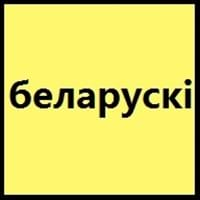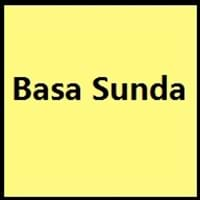Belarusian and Sundanese
Countries
Belarus, Poland
West Java
National Language
Belarus, Gambia
Indonesia
Second Language
Poland
Not spoken in any of the countries
Speaking Continents
Asia
Asia
Minority Language
Czech Republic, Lithuania, Ukraine
Not spoken in any of the countries
Regulated By
National Academy of Sciences of Belarus, National Languages Committee
Not Available
Interesting Facts
- Since 1918, Belarusian has been the official language of Belarus.
- Belarusian include many loanwords from Polish language.
- The Sundanese language is second most widely spoken regional language in Indonesia.
Similar To
Russian and Ukrainian
Madurese and Malay Languages
Derived From
Not Available
Not Available
Alphabets in
Belarusian-Alphabets.jpg#200
Sundanese-Alphabets.jpg#200
Scripts
Cyrillic
Latin, Sundanese
Writing Direction
Not Available
Left-To-Right, Horizontal
How Are You?
Jak vy ?
Kumaha kabarna?
Good Night
Dabranač
Wilujeng kulem
Good Evening
Dobry viečar
Wilujeng wengi
Good Afternoon
dobry dzień
Wilujeng siang
Good Morning
Dobraj ranicy
Wilujeng énjing
Sorry
Vybačajcie
Hapunten
Bye
da pabačennia
Wilujeng angkat
I Love You
JA liubliu ciabie
Abdi bogoh ka anjeun
Excuse Me
Vybačajcie
Punten
Dialect 1
North-Eastern Belarusian
Western dialect
Where They Speak
North-East Belarus
Banten
Dialect 2
South-Western Belarusian
Northern dialect
Where They Speak
South-West Belarus
Bogor
Dialect 3
Middle Belarusian
Priangan dialect
Where They Speak
Middle Belarus
Bandung
Second Language Speakers
Not Available
Native Name
Беларуская мова (Bielaruskaja mova)
Not Available
Alternative Names
Belarusan, Belorussian, Bielorussian, Byelorussian, White Russian, White Ruthenian
Priangan, Sunda
French Name
biélorusse
soundanais
German Name
Weißrussisch
Sundanesisch
Pronunciation
Not Available
Not Available
Ethnicity
Belarusians
Sundanese, Bantenese, Cirebonese, Badui
Origin
18th century
5th century AD
Language Family
Indo-European Family
Austronesian Family
Subgroup
Slavic
Indonesian
Branch
Eastern
Not Available
Early Forms
Old East Slavic
No early forms
Standard Forms
Belarusian
Sundanese
Language Position
Not Available
Signed Forms
Not Available
Not Available
Scope
Individual
Individual
ISO 639 6
Not Available
Not Available
Glottocode
bela1254
sund1251
Linguasphere
53-AAA-eb < 53-AAA-e (varieties: 53-AAA-eba to 53-AAA-ebg)
No data available
Language Type
Living
Living
Language Linguistic Typology
Not Available
Subject-Verb-Object
Language Morphological Typology
Not Available
Not Available
All Belarusian and Sundanese Dialects
Most languages have dialects where each dialect differ from other dialect with respect to grammar and vocabulary. Here you will get to know all Belarusian and Sundanese dialects. Various dialects of Belarusian and Sundanese language differ in their pronunciations and words. Dialects of Belarusian are spoken in different Belarusian Speaking Countries whereas Sundanese Dialects are spoken in different Sundanese speaking countries. Also the number of people speaking Belarusian vs Sundanese Dialects varies from few thousands to many millions. Some of the Belarusian dialects include: North-Eastern Belarusian, South-Western Belarusian. Sundanese dialects include: Western dialect , Northern dialect. Also learn about dialects in South American Languages and North American Languages.
Belarusian and Sundanese Speaking population
Belarusian and Sundanese speaking population is one of the factors based on which Belarusian and Sundanese languages can be compared. The total count of Belarusian and Sundanese Speaking population in percentage is also given. The percentage of people speaking Belarusian language is 0.11 % whereas the percentage of people speaking Sundanese language is 0.57 %. When we compare the speaking population of any two languages we get to know which of two languages is more popular. Find more details about how many people speak Belarusian and Sundanese on Belarusian vs Sundanese where you will get native speakers, speaking population in percentage and native names.
Belarusian and Sundanese Language Codes
Belarusian and Sundanese language codes are used in those applications where using language names are tedious. Belarusian and Sundanese Language Codes include all the international language codes, glottocodes and linguasphere.





